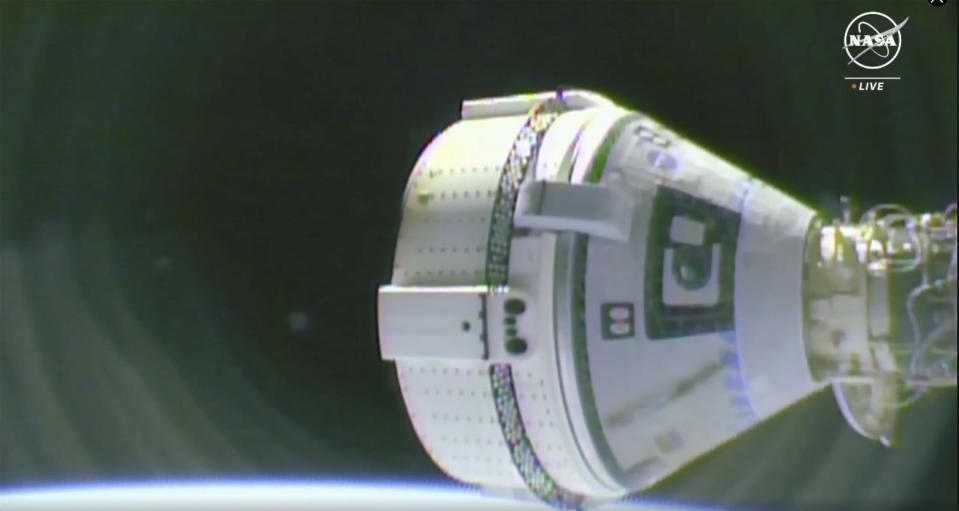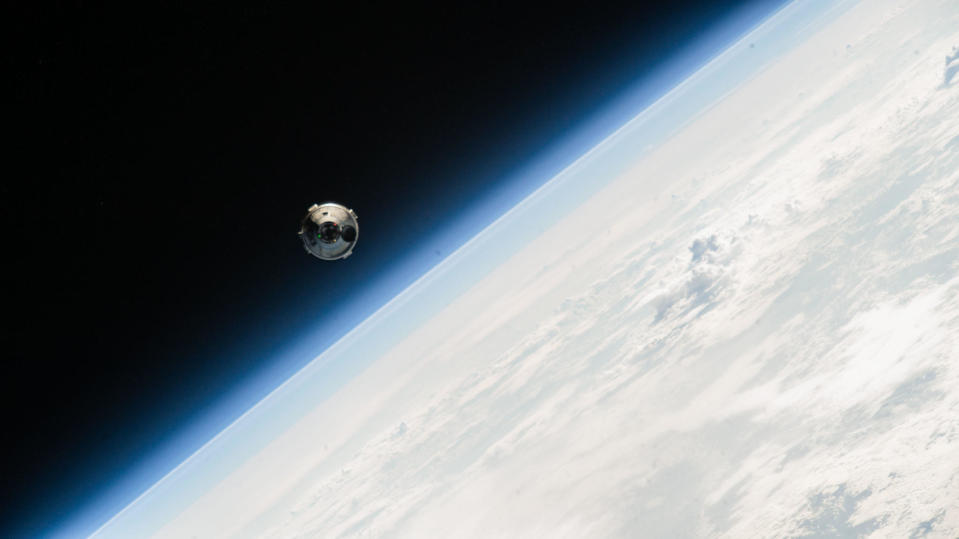Working around multiple helium leaks and thruster problems, the crew of Boeing’s Starliner spacecraft completed a challenging rendezvous and a delayed but successful docking with the International Space Station on Thursday, in a major milestone for the first piloted test flight of the new spacecraft.
With Commander Barry “Butch” Wilmore and co-pilot Sunita Williams Monitoring the Starliner’s automated approach, the Starliner’s docking mechanism engaged its counterpart in front of the station’s forward Harmony module at 1:34 p.m. EDT, as the two spacecraft cruised 260 miles above the Indian Ocean.
A few moments later, the Boeing ferry was pulled into a “hard” docking, ensuring an airtight structural seal.
“It was an OK, three-wire, Navy docking, complete!” mission control transmitted by radio.

“OK, indeed,” replied Wilmore, a veteran astronaut and former Navy test pilot. “It’s good to be connected to the big city in the sky.”
After extensive leak checks, the hatches were expected to be opened so that Wilmore and Williams could float to the laboratory complex to join the seven Expedition 71 crew: cosmonauts Oleg Kononenko, Nicolai Chub and Alexander Grebenkin, along with the NASA astronauts Matthew Dominick, Michael Barratt, Jeanette Epps and Tracy Dyson.


Wilmore and Williams plan to spend about a week aboard the outpost before returning to Earth on June 14 aboard the Starliner. While there, station staff will install a replacement urine processing pump module that was loaded aboard the Starliner at the last minute to repair the laboratory’s water recycling system and allow for normal bathroom use on the North American segment of the station. station.
Years of delay after several problems that cost Boeing around $1.4 billion to fix, the Starliner was there.released Wednesday with a known helium leak in the system used to pressurize the spacecraft’s propulsion system. The launch was delayed a month, in part due to work to confirm the ship could be launched safely with the leak as it is.
After reaching orbit, two more helium leaks appeared that prompted flight controllers to close valves leading to the affected manifolds while they analyzed leak rates and possible workarounds. Closing the collectors knocked out six of the reaction control system’s 28 jets and three of the 20 most powerful thrusters.


As Starliner approached the station on Thursday, all three manifolds reopened to provide the pressure needed to operate all available thrusters.
Engineers then had to deal with four RCS jets that failed or displayed suspicious readings. Flight controllers then ordered test firings to check performance and all but one of the thrusters were recovered. But by then, the crew was forced to shift to a backup docking opportunity.
Throughout this process, Wilmore flew the Starliner manually, maintaining position about 650 feet from the space station. When ground teams concluded that the spacecraft had enough thruster redundancy to proceed, the Starliner’s automated control system took over and brought the spacecraft into a trouble-free docking.
Flight controllers planned to close the three suspected helium collectors to prevent any leaks while they were connected to the station.
Despite the leaks, NASA officials said there was enough helium on board to provide 90 hours of flight beyond the docking point, more than enough time to complete a mission of normal duration.
But the cause of the leaks and thruster problems could require extensive post-flight inspections and upgrades, another potential headache for Boeing and plans to begin operational Starliner flights to the space station early next year.
Boeing Starliner docks at the International Space Station
Israel conducts deadly attack on UN school in Gaza, says Hamas militants operated there




































